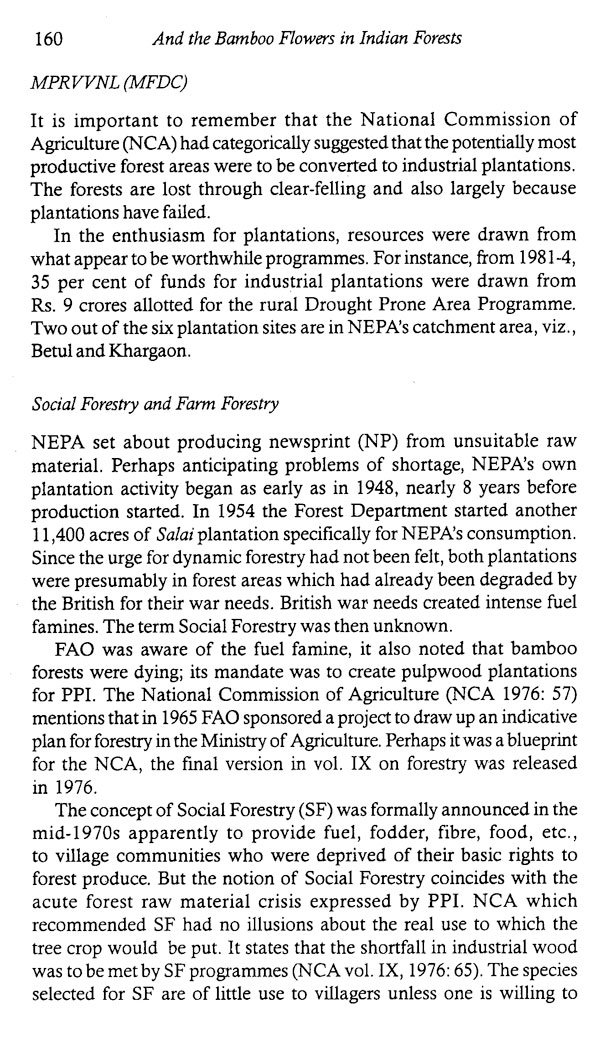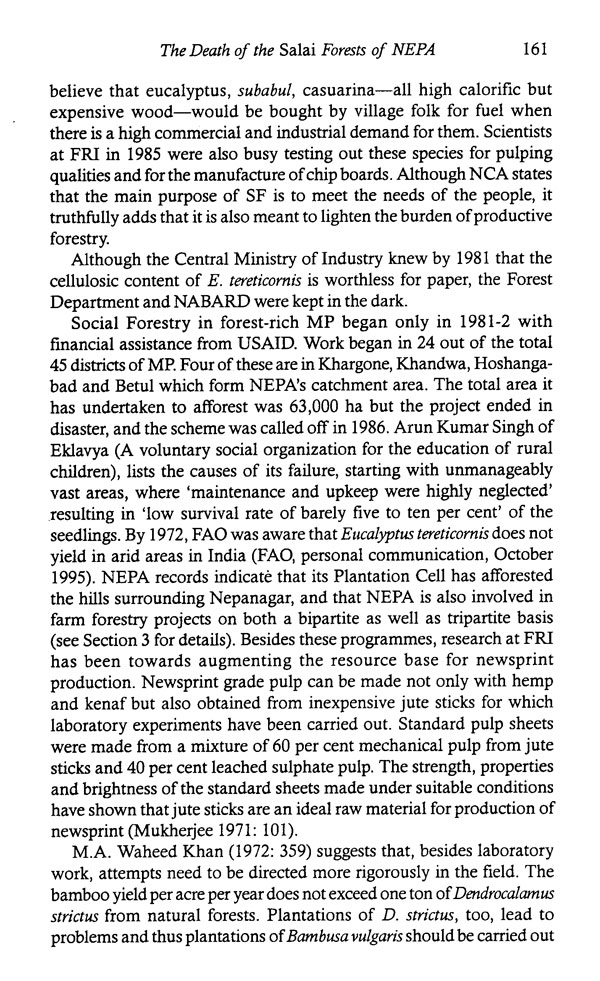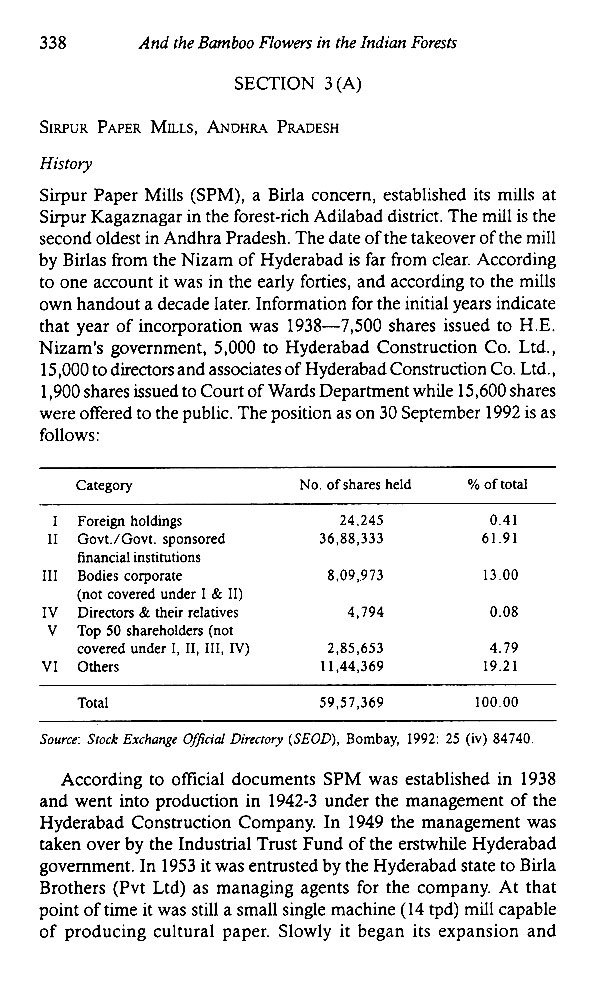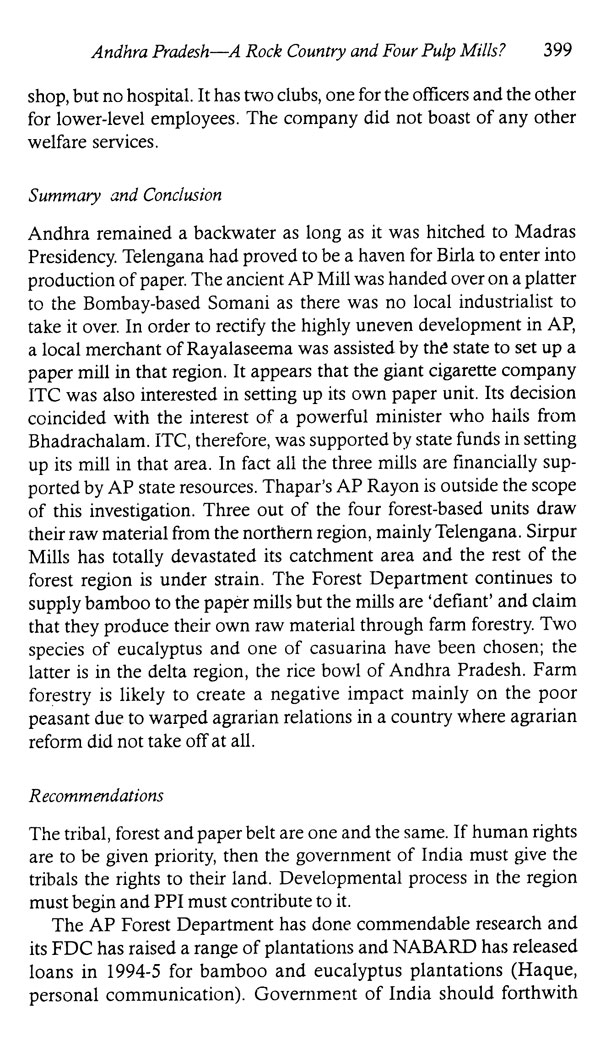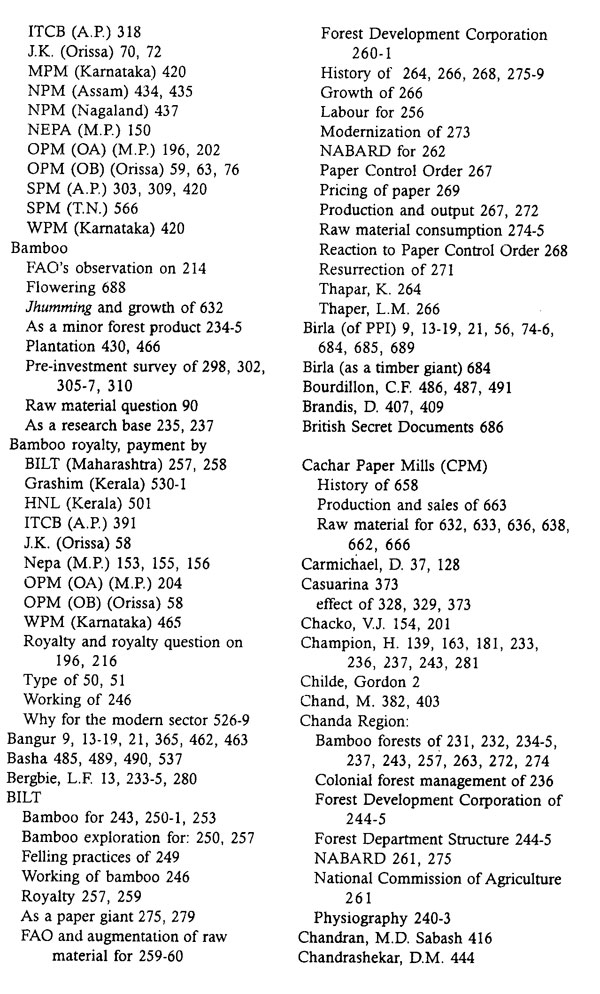
And The Bamboo Flowers in the Indian Forests- What Did the Pulp and Paper Industry Do? (A Set of 2 Volumes)
Book Specification
| Item Code: | NAZ746 |
| Author: | Manorama Savur |
| Publisher: | Manohar Publishers and Distributors |
| Language: | English |
| Edition: | 2003 |
| ISBN: | 8173044139 |
| Pages: | 753 (49 B/W Illustrations) |
| Cover: | HARDCOVER |
| Other Details | 8.70 X 5.50 inch |
| Weight | 1.15 kg |
Book Description
This book is on Indian forests. In natural formations bamboo flowers at long intervals. But in the post-World War II era, especially in India after 1959, flowering of bamboo began to portend disaster. This study explores not only how and why the pulp and paper industry (PPI) caused the death of the bamboo forests that were an inexhaustible source of its raw material; it also investigates the impact that cultivation of alternate raw material has had upon the forest eco-system. In this context the negative role of the prestigious UNFAO is emphatically explored.
Clues to many of these issues are found in the natural and social history of the forests. The indigenous people are viewed as a part of the forest eco-system. The political economy of the forest-based industry has made the study many layered, into which is woven the intrigues of the FAO.
The industry's four decades of shadow boxing with the state and its antipathy against the 'Licence Raj' followed by its fears upon opening up of the Indian economy need not have occurred. The profit generating private sector, the PPI did not care to modernize like the late emerging public sector newsprint industry had done. The latter has raw material saving technology and pollution free techniques for the production of newsprint. incidentally, the study also touches upon the destruction of the timber forests by the ply and veneer industry.
Manorama Savur's initial training was in natural sciences and later in social sciences. She was awarded her Ph.D. in 1962. As a Professor of Sociology for over twenty years, she taught Sociology of Development and Rural Sociology at the University of Bombay. In early 1980s her interest shifted to forests and the forest question. The present study is her post-retirement project involving six years of research and extensive field work. She has three books and over thirty papers to her credit.
This study deals with the consequential effects that the growth of the forest-based pulp and paper industry has left on the tropical forests in India which are spread over nine states.
The pulp and paper industry is owned by the most powerful section of the Indian business class. This class has enough clout to manipulate the State structure and is responsible for both the denudation of bamboo forests and apparently for imposition of untried exotics on a massive scale on the natural forests. But eucalyptus as a pulpable species was introduced by FAO. It is important to know why. Being a state subject, the forest departments' reactions to such intrusions vary. There are also interesting differences with which state forest departments cope, or fail to cope in relation to the growing demand on their forests. These are often related to local social history and to the local environment movements. Forests have faced a variety of other pressures, starting with the pressure initiated by the colonial government. Here again there are interesting state-wise differences. We therefore feel that the wealth of information and the complex network of relation-ships should be analysed and presented state-wise. Only then will the policy implications of this study become clear and useful.
There were, of course, broad similarities which became the bases to test out the hypothesis that emerged through the course of the study and on the basis of the methodology employed. The similarities were also useful to arrive at some generalizations.
The project is funded by the Indo-Dutch Programme on Alter-natives in Development (IDPAD) in collaboration with the Indian Council of Social Science Research (ICSSR), New Delhi, and the Institute for Social Science Research in Developing Countries (11v1W00), The Hague. IDPAD, however, does not take responsibility for the facts stated, opinions expressed and conclusion reached in this report. Recommendations are made as a part of IDPAD's mandate.
Book’s Content and Sample Pages





